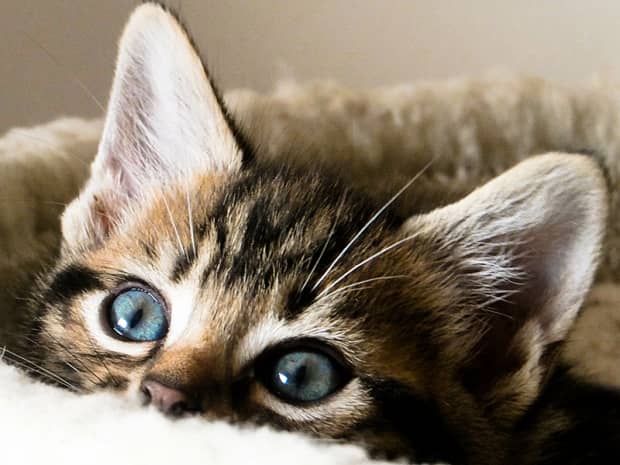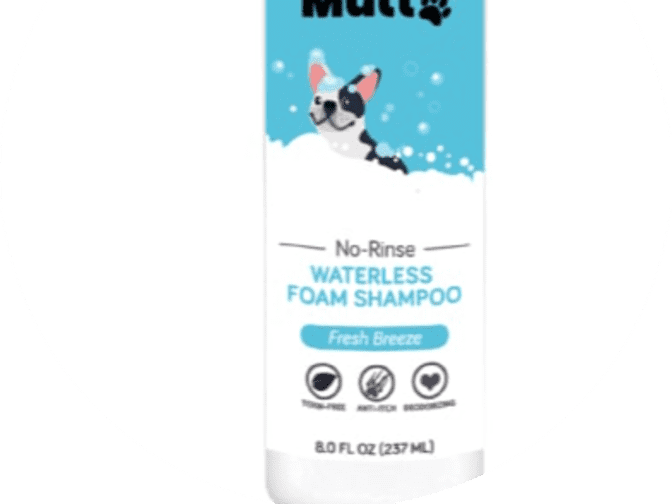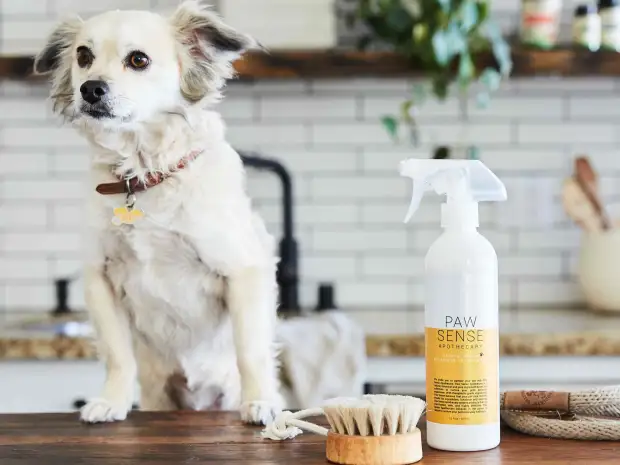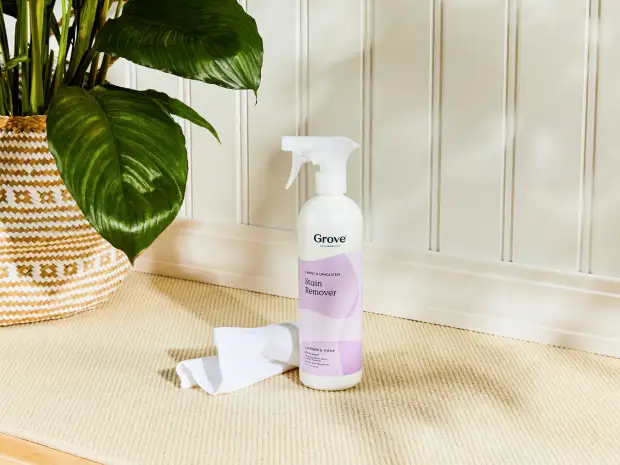
What does catnip do to cats & is it harmful?
Watching your cat roll around in catnip without a care in the world may have you wondering: How does it make your kitty so happy and is it good for them?
Read More

Last Updated: September 13, 2021
Dirty kitty? No problem. Follow our guide on how to bathe your cat at home and treat their ears — without getting cat scratch fever in the process.
Cats are superior creatures in many ways. They’re cute, they (sometimes) like to cuddle, they bring us dead animals as gifts, and they’re exceptional at grooming themselves — more than we can say for some people we know.
In the event your precious baby kitters gets so filthy or flea-ridden that someone needs a bath, we’ve got tips.
Never had the pleasure of being owned by a cat before? Check out our guide on adopting a cat for everything you need to know about these mysterious and wonderful creatures.

First things first, grab your supplies. You’ll need:

Wondering who Grove is, what types of products we offer, and how to get a free gift set when you sign up? Learn more about flexible monthly shipments, customizing your shipment, and joining millions of happy households — no monthly fees or commitments required.
Bathing a cat may seem hard because cats historically hate water. But here are some steps to follow to get the job done.
Place a third towel in the water — this gives your cat something to grip when they get nervous.
Tell your cat how precious he is. Tell her she’s the only thing you’ll ever truly love. Serenade him with songs that you make up on the spot. Give her all the praise in the world, because she deserves it — she’s letting you bathe her.
Add the shampoo, and gently work it into the fur, starting at the neck and working toward the tail — back, chest, belly, legs, and precious little paws! Use a damp washcloth to clean your cat’s handsome, lovable face.
Leftover soap residue may irritate your cat’s tender feline skin.
Absorb as much water as possible so your cat doesn’t shake it all over you and the house once you set them free.
Ply them with yummy catnip treats, a can of the good wet food stuff, or a new toy. Give them rubs and scratches, and pledge your eternal devotion. It probably won’t be enough — but at least you tried.
To make your life easier, here’s a super cute and helpful video on how to bathe your cat — watch and learn before your lil’ baby’s feet ever hit the water.
Grove Tip
It’s common knowledge that cats hate water — but why?
One theory is that the water weighs down their fur — imagine being draped in a wet blanket, and you can probably understand why wet fur is uncomfortable for your fur baby.

If your cat hates bath time, you’re not alone. But how does one go about bathing a creature with razor-sharp claws who gets violent when confronted with water?
Enter dry shampoo. No, not the kind you use for your hair (although we love that stuff, too). This dry shampoo is formulated for hydrophobic cats who would rather tear you to shreds than set foot in a tub full of water.
Dry cat shampoo absorbs excess oils, removes dirt, and helps deodorize your stinky cat so the love of your life not only looks good but smells good, too.

This gentle and effective Mighty Mutt Dry Shampoo Foam for Dogs is perfect for a quick & easy clean without water for in-between baths or any time your pet is not in the mood for getting wet.
Plus, it's anti-itch & deodorizes with a natural fresh scent.
In general, you shouldn’t need to bathe your cat at all. Your cat’s barbed tongue does a fantastic job of cleaning dirt, debris, and dust from their coat, plus they’re pretty fastidious about keeping themselves clean without you.
But some cats — like an older one who can no longer groom, a poor guy with fleas, or a naughty dude who got into something really gnarly — may require your humble assistance.
Still, don’t bathe your cat more than once every six weeks — frequent bathing with soap and water could cause skin conditions like rashes or dryness that’ll make your sweet babe miserable.
Grove Tip
Thomas Ling of the natural pet care line kin+kind says, “Things that you want to do and engage in with a pet (like paw care and brushing teeth) can be a real joy for them, especially if you introduce it to them early. They like it, and it becomes fun — it's not a chore.”
Most cats can clean their ears themselves, but sometimes, material gets trapped deep within their ear canal and has a difficult time finding its way out. This trapped material can lead to itchiness and ear infections.
Clean your cat’s ears with these steps:
Then squeeze some feline ear cleaning solution or coconut oil into your cat’s ear.
Massage the ear below the opening for 30 seconds with the hand not holding the ear flap to help the cleaning solution break up the debris.
Allow your cat to shake their head to dislodge more stuff.
Then repeat the process with the other ear.
The American Veterinary Medical Association has some pro tips on how to properly clean your cat’s ears. Watch:
Grove Tip
Ear mites are tiny, eight-legged parasites that infect cats and dogs. These icky little bugs have fur all over their bodies that cause intense irritation in your pet’s ears.
If your titter’s ears are inflamed, have discharge, or emit a funky odor, make a vet appointment. Your vet will give you tips on how to clean out an ear mite infestation safely and effectively.
Give fleas the finger — naturally. We’ve got quick tips to get rid of these pesky bloodsuckers ASAP .
For more tips and tricks to getting rid of fleas naturally, check out our complete guide on the best natural flea prevention methods for cats and dogs.

Watching your cat roll around in catnip without a care in the world may have you wondering: How does it make your kitty so happy and is it good for them?

Check out our top 30 best pet products for dogs and cats alike. Find one that works for your furry family.

Try natural pain relief for dogs first with expert recommendations, and learn when it’s time to see your vet.

We’re here to help with this guide on how to get urine stains, smells, and residue out of everything.